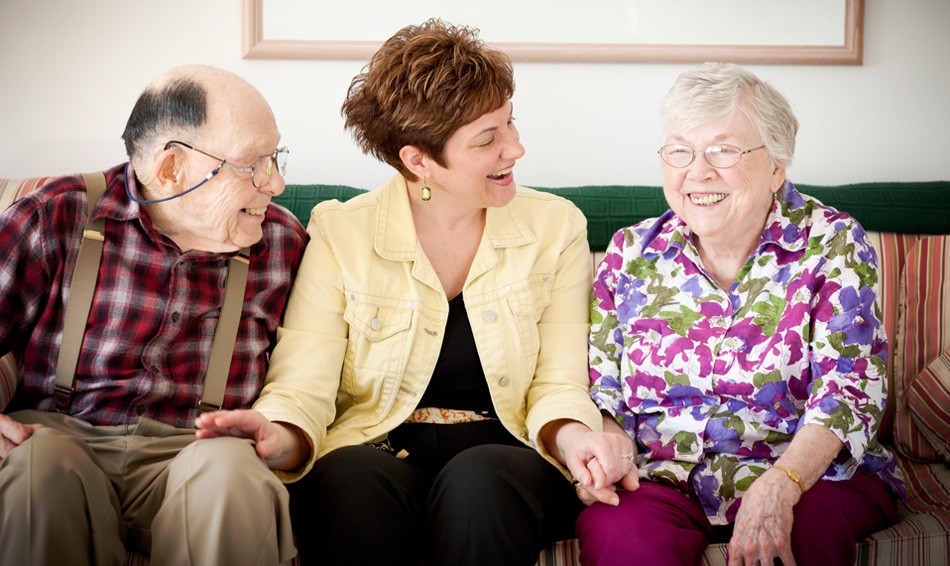
Ever wish that more of your clients were proactive planners? Get tired of hearing ‘I’m not ready for that’ or ‘When something happens, I’ll call you’?
At 86 years old, Mildred feels good and stays busy. Despite her recent bout of pneumonia that ended with a hospitalization and 10-day rehabilitation, she remains optimistic that that won’t happen again. She doesn’t need in-home care, or any other services either. Sound familiar?
And yet as professionals working with seniors like Mildred, we know the path ahead. We’ve seen far too many people have their lives and retirements derailed by little issues that grew into major concerns. And those health care issues end up costing Mildred more than just money. They rob her of her independence, control, and choices.
So how do we help people like Mildred plan ahead – which we know saves them money as well as their independence, and that makes their resources go further?
The online Free Dictionary defines proactive planning as acting in advance to deal with an expected difficulty. It’s about initiating change rather than reacting to events.
Lifespark recently held discussions with about 50 health and senior care professionals from across Minneapolis and the Twin Cities metro to get their insights on the best tactics for encouraging more clients and families to become proactive planners.
First, Identify the Barriers
The first step is to understand the barriers to proactive planning as the causes may actually help identify the best solutions.
- Fear
- Guilt
- Finances
- Overwhelmed/paralyzed by . . . choices, the situation, or fill in the blank
- Optimism
- Lack of knowledge/experience
- Health/cognition issues
Surprisingly, the participants concurred that many people seem to have proactive planning skills (i.e., they plan for vacation, celebrations, retirement, college, etc.) but often don’t apply those skills to health care and aging.
If we ask a group of people to raise their hands if they feel they are proactive planners, behavioral research shows that most will actually raise their hands. And for a brief period of time, all of those folks who identified themselves as proactive planners will ACT as proactive planners. The easiest step then may be to just ask people whether they feel they are proactive planners, and then they will be more likely to act that way for a short period of time. But what about when that wears off?
Here are the five top tips identified by our Minneapolis professionals.
Top 5 Tips to Encourage Proactive Planning
- Make it fun: Okay, fun may not sound like the right word, but people like to do things that are interesting, engaging . . . and well, fun. You’ve heard the term edutainment. How can you apply the fun factor to your process, education, or tools that will increase engagement? There’s a reason that games and quizzes make some of the most popular articles, blogs, and social posts.
- Get them to take an initial step: The Twin Cities professionals agreed that once you can get someone to take an initial step, it is easier to keep them engaged. So how can you make that first step easier, simpler? Or perhaps give them an incentive by promising some type of ‘carrot’ for taking that first step. And of course, don’t forget to look at all the things that may be creating barriers to them taking that first step. Check out some of the latest behavioral economics research in the books Influence by Robert Cialdini, Nudge by Richard Thaler, or Thinking Fast and Slow by Daniel Kahneman for more insights and ideas..
- Make it simple and automatic: The steps you want your clients to take shouldn’t feel like a major effort. The more you can make those initial steps automatic and easy, the more likely people are to follow the plan. For example, what is the default option? Research shows that people are more likely to accept the default than if they have to actively opt-in or change preferences. Another example is making the follow-up physician’s appointment before the senior is discharged from the hospital or TCU. That makes it significantly more likely the person will get the follow-up care needed to stay independent at home.
- Provide long-term guidance: Research increasingly shows the value of care management – how one-to-one personal guidance helps keep people on track with their care plan. Same results happen for financial planning. People need help when they hit transitions in their lives to keep them on track for their desired goals. But we never know when those transitions or changes will hit, so we need ongoing trusted connections. That’s one of the reasons Lifespark developed its whole person senior care model with long-term Life Management.
- Start with ‘Why’: Educating people about their options, including the risks ahead was a major theme throughout our discussion. All participants agreed that education needed to be the cornerstone of any effort to encourage proactive planning. But we need to start our education with the right approach. Simon Sinek, a British motivational speaker and marketing consultant, has researched how smart companies communicate and translated his findings into a book and one of the top TED Talks. And it all starts with ‘why.’ He found that while most businesses explain what they offer and how they do it, the most successful communicators step back to start with ‘why’ they do what they do. That’s because explaining ‘why’ something is important ends up being significantly more compelling. It appeals to our emotions rather than our logic. Try it out for yourself. Before you explain what you want someone to do, try sharing why being a proactive planner is important to them and to you. Then watch the difference in response.
What do you think are the top ways to encourage seniors like Mildred to become better proactive planners?



